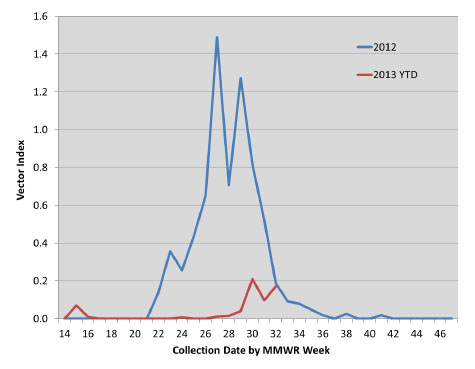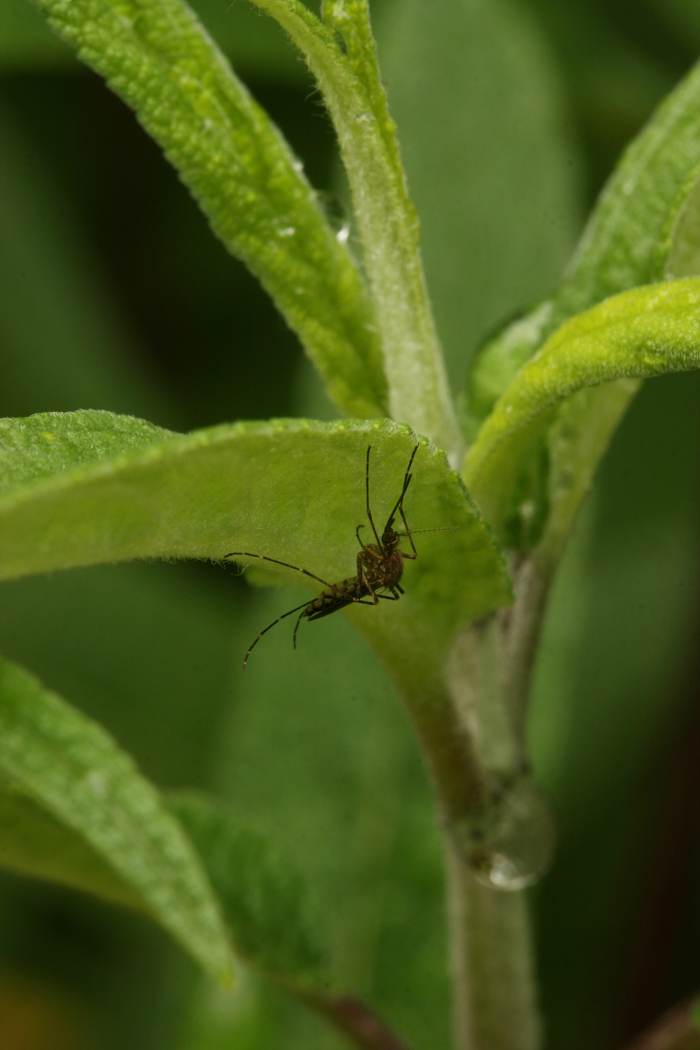This week I attended the West Nile virus survivors support group, hosted by Dr. Don Read and his wife Roberta at the Medical City Dallas Hospital. The group meets every two months or so and provides a forum for learning about the disease and allowing victims to share their experiences and learn from other people who have been down the same rough road.
This month’s meeting ended up being very moving, hearing the stories of several people who came down with the illness last summer. One woman in her mid-thirties, another man in his fifties, and another older gentleman were all healthy, active individuals who thought West Nile virus was something they would never have to worry about, much less the most severe form of the disease. For each it has been a life-changing experience and one they all said “they would not wish on their worst enemies”.
At the meeting there was good news in the form of a presentation by Dr. Robert Haley, epidemiologist from Southwestern Medical School and Past-President of the Dallas County Medical Society. Dr. Wendy Chung of the Dallas County Department of Health and Human Services, Dr. Haley and several other colleagues recently published an article in the Journal of the American Medical Association documenting last year’s epidemic in Dallas county and offering hope for how to predict future epidemics.
You’ve heard that every cloud has a silver lining. In the case of last year’s WNV outbreak this was certainly true, thanks to Drs. Chung and Haley, and and their team’s hard work. The large number of cases last year (nearly 400, with 19 deaths) allowed researchers to look at disease trends and to generate some statistically strong numbers that, if known at the time, might have prevented many illnesses and deaths.
I wanted to share two of the findings with you and evaluate this year’s situation in light of what was gleaned from 2012. First, the research gave support for use of a relatively new index used to monitor the course of the disease. It’s called the Vector Index (VI) and it is derived from data on the abundance and infection rates of mosquitoes caught by city health departments. Because this number includes both infection rate and mosquito abundance information, it is a more accurate predictor of disease in humans than either measurement alone.

Weekly changes in the Vector Index in Dallas County in 2012 and 2013. Notice how low the 2013 values are in comparison to 2012. Researchers believe that an index of 0.5 or higher is predictive of human outbreaks in the Dallas area. Data and graph courtesy Dallas County Health and Human Services, and special thanks to Dr. Wendy Chung and her team.
The team discovered that the VI is highly predictive of human epidemics, and that a VI of 0.5 or higher seems to precede large numbers of human cases–at least in Dallas. Although numbers of adult Culex quinquefasciatus mosquitoes this year have trended higher than even last year, the rate of mosquito infection has been lower. This is reflected in much lower VI values for 2013, and if Dr. Haley and his team are correct, WNV risk appears to be much lower this year than last year at this time.
The other significant aspect of their work was data showing that dire health consequences of aerial spraying on human populations was a non-event. During the height of the spraying last summer there was no noticeable or statistical increase in either skin rashes or asthma-like complaints reported to hospitals. Officials last year assured the public that aerial spraying would be safe, and the data clearly support that promise.
So while we don’t expect any big West Nile headlines this summer, this does not mean that there is no risk. Mosquitoes and WNV are nothing to sniff at, and all it takes is a bite from one infected mosquito to change your life. Personally, I’m staying inside more this summer in the evenings, and when I do go out, even for a few minutes, I spray myself with OFF. I find that the only time I get bitten when wearing OFF, is when I’ve missed treating an area of skin (I react to most mosquito bites and know when I’ve been bitten. Not everyone knows if they have been bitten). Be sure to use repellent, and continue to police your home and environs for mosquito breeding sites. And visit the soon-to-be-updated Mosquito Safari website to learn more about what places in your own backyard might be contributing to this summer’s high numbers of mosquitoes.
